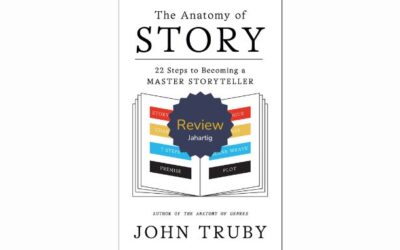Story synopsis: In a dystopian America, where a radical party and a rising despot have taken over the government, Grace embarks on a perilous journey to escape her homeland before the government seals off its borders. Her path collides with a young girl brought to the USA for a better future who instead must flee for her life. As Grace races against time in desperate hope for sanctuary, the decisions she makes shape her destiny.
Story shared with newsletter subscribers only. To read Fear, Flight, Hope, sign up below.
Short Story Challenge
For 2024, four other writers and I committed to completing a short story each month. We’re using the prompt for these stories from the contest hosted by Elegant Literature. However, given their bent toward Fantasy and Horror genres, I’ve chosen to substitute other prompts at times to keep with my motivations for this personal challenge—to explore different writing genres and hone my storytelling craft through ‘fast iterations.’
For January, the prompt is ‘Flawed Futures’ and must contain the word seed. The contest requires that any stories submitted are not published elsewhere for a set period of time. I’ll provide the story to newsletter subscribers in March 2024.
As I embrace my role as a writer, my relationship with my writing is evolving, and I’ve decided to limit access to some short stories. Newsletter subscribers will receive them as a gift for their support.
Writing Process
Writing friends began asking about my process. I must admit the inquiry tickles and excites me. This story was a good one to use as an example to describe my process because it followed a circuitous process that resulted in an interesting outcome.
Story Inspiration
Inspiration started with the prompt and collided with world events. Attitudes around immigration, asylum seekers, and political extremism are reaching a boiling point around the globe. My grandparents arrived at Ellis Island almost a hundred years ago, and my experience as an expatriate provided a small taste of the difficulties they experienced moving to and settling in another country. I wanted to explore the conversations and stakes around fleeing your homeland as it devolves into a dictatorship.
Creating the First Draft
When writing a speech or telling a story, I prefer to create a title early in my process to act as a north star or log line. I’ve found it easy to veer off track or lose focus otherwise. The first working title was Impossible Decision.
To keep the story under 2000 words, a small cast was a priority. I focused on a married couple with similar ideologies so the stakes would be similar, but conflict arose because of differences in their gender and perception of risk. Choosing a mature couple with two grown children of different genders increased the stakes and provided added depth.
I wrote the story in the Status genre and it initially had two scenes, but I truncated the second scene before resolving it. By leaving the question up in the air, I hoped it would force the reader to reflect and realize the difficulty in making such decisions. After the first draft, I felt the major story components were present, but the story was flat.
When my SHEG (editing group) read it, they concurred the story wasn’t landing on the reader. They suggested the character’s conflict needed to be more personal. I decided to scrap the first draft and start over.
When to Start Over
A writing buddy asked what prompted me to start over instead of editing the first draft. I replied it would never become what I wanted it to be. She questioned me further to understand how I came to that conclusion. When do I decide to throw away all the work in my first draft to create a new story? Was this procrastination, perfectionism, or avoidance? If not, how did I determine to start anew?
My decision sprang from my experience of creating and giving speeches. The story conveyed information, but it didn’t stir emotion. My genre choice and construct meant it never would. For my story to have an impact, I needed to convey the emotional toll of leaving your homeland. I wanted the reader to experience fear and anxiety.
I changed the genre to an action story with hints of morality testing and used the Sound of Music as loose inspiration. The primary question remained when to stay (fight) and when to flee (hide), but shifted the focus slightly to what you fight for and flee from defines you.
Creating a Good Story Involves Problem Solving
Including an illegal immigrant character emerged from my research. The hurdles to immigration and asylum vary considerably based on age, profession, and origination. Incorporation of this character offered the opportunity to introduce a victim (a component of the action genre). It also provided a counter position of trying to get into the US versus fleeing.
A child elicited maximum sympathy but also posed a significant risk of becoming creepy. I spent hours researching birth certificates, adoption paperwork, migrant centers, and border crossings. The twist at the end answers the conundrum of what the protagonist should do with the child once she finds her. Having friends whose families have fled Venezuela and some whose relatives remained made it an obvious choice for the character’s homeland. The decisions facing American characters in the story echo the plights our Venezuelan friends have faced.
In the second draft, I had high stakes and a good narrative drive, but the cast of characters was getting large. While the topic of immigration and a dystopian world warranted the cast size, the two-thousand-word limit didn’t since story length grows with each character and location change.
Aargh, This Will Never Work
With a week to go until the deadline, I hit a wall. Doubt set in, and I became convinced that the story would never work—at least within the guidelines.
After a day of despair, I doubled down.
I changed the father’s role, so he became symbolic of the country. Swapped perspectives between the protagonist and her husband, raising the tension and improving the flow. Trimmed snippets of text throughout. Compressed the trip to the border.
Testing the story electronically confirmed what I felt in my bones. The style was good, and my ideas were conveyed in words (or so sayeth my AI overlords).
A successful story was created! I danced and celebrated a hard-fought win.
Stories Emerge During Editing
In my dreams, I will reach the point where I have an idea, create an outline, and write a draft that requires minor tweaks before publishing. I’ve witnessed reporters submit articles they prepared in minutes, so why can’t I? Drafting, rewriting, and multiple rounds of editing feel like a waste of effort and time.
Unfortunately, writing fiction differs greatly from nonfiction or reporting. There are as many ways to create a story as there are authors, but one universal truth exists—good stories emerge through editing.
I’ll never reach the dream, but I’m getting closer.




0 Comments